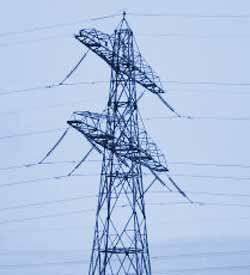| |
Electrical
Injuries
Electrical injuries present unique challenges.
Electrical injuries may be caused by man-made or natural sources.
It is estimated that 1,000 people
die annually from electrical injuries. Of this percentage, 10-percent
die from lightening-related electrical injuries.
Children account for 20-percent of all
electrical injuries with numbers rising as the age of the child
decreases. Electrical injuries are commonly caused by both
alternating current (AC) and direct current (DC) sources. At home,
electrical injuries are usually caused by AC devices such as household
appliances, outlets, electrical and extension cords and tools
and machinery.
In the workplace, injuries are also caused mostly by tools and
machinery. Utility workers suffer the highest percentage of electrical
injuries especially those who come in contact with high-voltage
power lines. These power lines contain DC current, which usually
cause a shorter, but more powerful burst of electrical current.
AC current is dangerous because it stimulates continuous muscle
contractions and burns and often the victims cannot release themselves
from the electrical source. Electrical injuries can be caused
in four main ways:
1. Cardiac arrest due to electrical shock
2. Muscle, nerve, and tissue damage from the passage of the current
3. Thermal burns from the source of the shock
4. Blunt trauma injuries resulting from be hurled by high-voltage
lines
When faced with a victim receiving an electrical injury, the U.
S. National Institutes of Health recommends:
1. DO NOT touch the victim with your bare hands while the person
is still in contact with the source of electricity.
2. DO NOT remove dead skin or break blisters if the victim has
acquired burns.
3. DO NOT apply ice, butter, ointments, medications, fluffy cotton
dressings, or adhesive bandages to a burn.
4. DO NOT touch the skin of someone who is being electrocuted.
5. DO NOT get within 20 feet of someone who is being electrocuted
by high-voltage electrical current until the power is turned off.
6. DO NOT move a victim of electrical injury unless there is immediate
danger.
What do you do?
- If safe, shut off the power to the object causing the shock
- If unsafe, then use a non-conducting object, such as a broom,
chair, rug, or rubber doormat to push the victim away from the
source
- Call for medical help
- Administer CPR as needed
- Apply cool water to the burn area
- If the victim is pale and shows signs of shock, then lay the
patient down, with head slightly lower than the trunk of the
body and elevate the feet. Place a warm blanket or coat over
the person.
- Stay close to the victim until medical help arrives
Electrical injuries in the home are often preventable. Many home
injuries can be avoided by placing child safety plugs in all outlets
and keeping electrical cords and appliances away from small children.
Also, council your children on the dangers of electricity and
lead by example in taking every possible precaution against injury
yourself.
|
|


